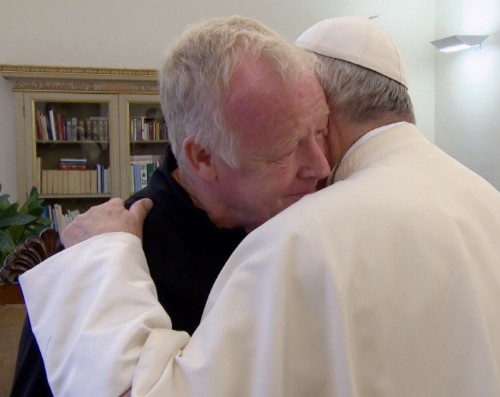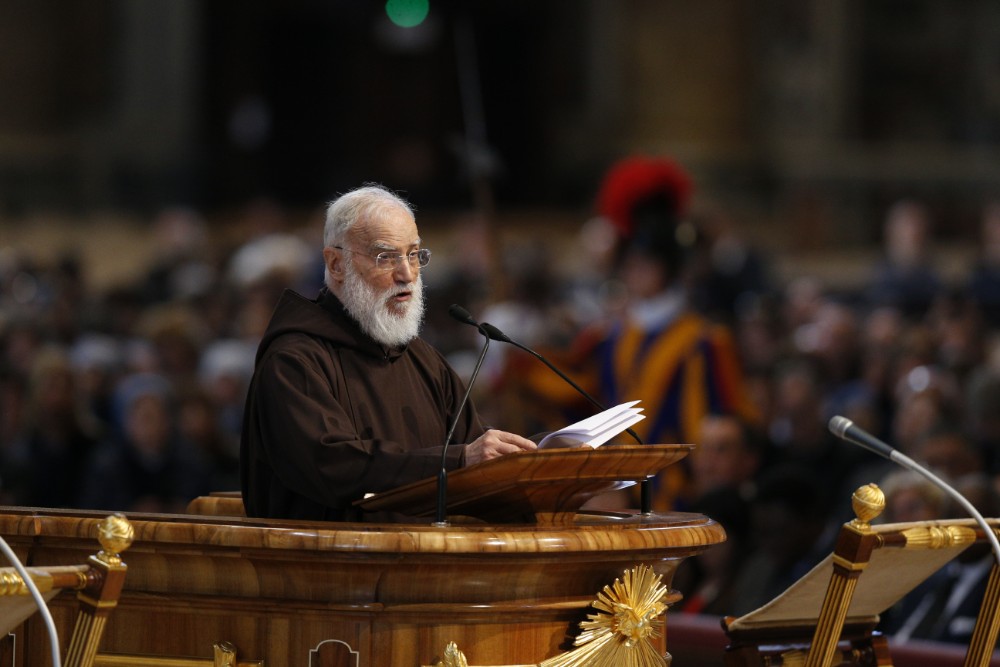All religions must together speak out against the yawning wealth gap between a tiny group of super-rich and those so poor they are unable to feed their children, the Pope’s preacher said in a Good Friday homily.
Fr Raniero Cantalamessa told the congregation in St Peter’s Basilica that the crucifixion of Jesus reveals the upside-down logic of the Gospel, which he said meant the Church has to stand shoulder-to-shoulder with the forgotten and the voiceless.
“The Church has received the mandate from its founder to stand with the poor and the weak, to be the voice for those who have no voice, and, thanks be to God, that is what she does, especially in her Chief Shepherd,” the Preacher to the Papal Household said.
“We can say to the poor, the outcasts, those who are trapped in different forms of slavery still occurring in our society: Easter is your feast!”
But the 84-year-old Capuchin friar explained there was another task, equally as pressing.
“A few privileged people possess more goods than they could ever consume,” Fr Cantalemessa, who has held the role of papal preacher since 1980, said.
“While for entire centuries countless masses of poor people have lived without having a piece of bread or a sip of water to give their children. No religion can remain indifferent to this because the God of all the religions is not indifferent to all of this.”
Dressed in his brown habit, the Italian friar delivered his Good Friday homily in front of Pope Francis who listened to his words alongside diplomats accredited to the Holy See, cardinals and bishops.
He warned the rich, the powerful and those who consider themselves “victors” to avoid the “illusion of omnipotence” which he said is the “worst evil for a human being.”
Fr Cantalamessa explained that while the cross has a message of “love and salvation” for the wealthy and powerful elites “it reminds them that in the end they are bound to the same fate as everyone else: whether weak or strong, defenceless or tyrannical, all are subjected to the same laws and to the same human limitations.”
He added: "Death, like the sword of Damocles, hangs over everyone’s head by a thread.”
Christ’s crucifixion and resurrection, Fr Cantalamessa went on, is a “feast of the reversal directed by God and accomplished in Christ,” one which sees the “unique turnaround that is completely just and irreversible concerning humanity’s fate.”
During his homily he cited Howard Thurman, the African-American writer who inspired Martin Luther King, who wrote that Jesus represented the slaves in America’s deep south.
“When the slaves were deprived of every right and completely abject, the words of the Gospel that the minister would repeat in their segregated worship — the only meeting they were allowed to have— would give the slaves back a sense of their dignity as children of God,” he said.
"It is easy to imagine the spirit with which they sang out in the sun or inside their huts, 'Nobody knows the trouble I have seen. Nobody knows, but Jesus'.”
After delivering his homily, the Pope, cardinals and other members of the congregation lined up to kiss and venerate the crucifix. The Good Friday liturgy, which includes prayers for non-believers, Jews and Christian Unity, is the centre point of the Holy Week Triduum services, spread over three days.
In his homily, however, Fr Cantalemessa pointed out this hasn’t always been the case.
“In the first three centuries of the Church the celebration of Easter was not spread out over several days the way it is now: Good Friday, Holy Saturday, and Easter Sunday. Everything was concentrated in one day. Both the death and resurrection were commemorated at the Easter vigil,” he said.
“To be more precise, neither the death nor the resurrection were commemorated as distinct and separate events; instead what was commemorated was the passage of Christ from one to the other, from death to life.”



 Loading ...
Loading ...